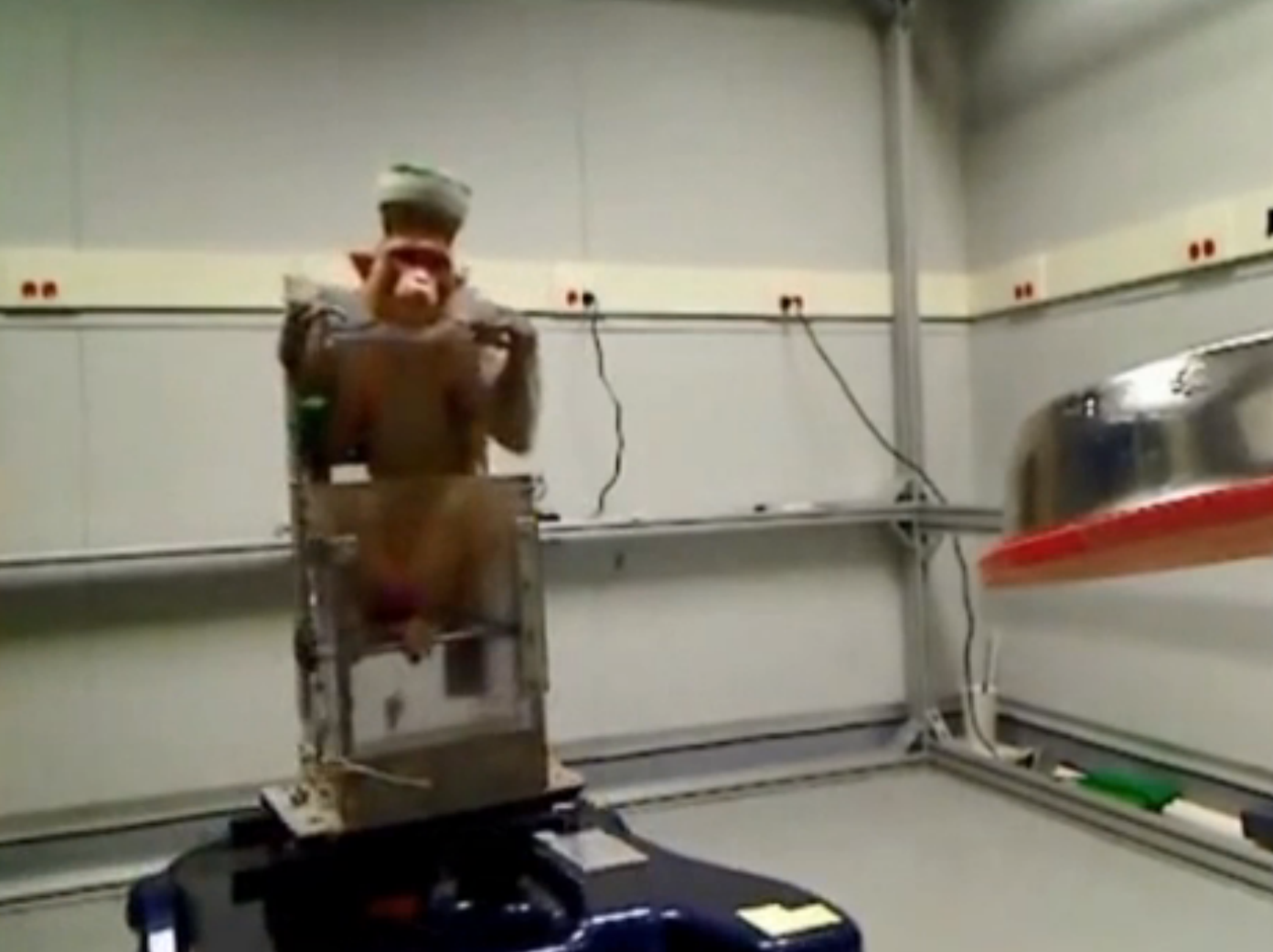Monkeys can control wheelchairs now — with their minds

Two monkeys have lately given new meaning to brain power — they used their thoughts to move a wheelchair, driving it forward in pursuit of fresh grapes.
The eye-popping occurrence wasn't telekinesis in action. Rather, scientists at Duke Health used the electrical signals firing inside a monkey's brain to direct the wheelchair's movement. They envision that similar technology someday could be used to help people with severe paralysis, such as quadriplegics or those with Amyotrophic Lateral Sclerosis, better known as Lou Gehrig's Disease.
The research also adds to the array of new and emerging technologies that are merging man — or in this case, monkey — and machine in radical ways. Designed primarily for amputees or those with severely limited mobility, many of the technologies employ what amounts to thought control, translating an individual's intention into action through an intermediary device. Key differences, however, lie in how that translation happens.
The Week
Escape your echo chamber. Get the facts behind the news, plus analysis from multiple perspectives.

Sign up for The Week's Free Newsletters
From our morning news briefing to a weekly Good News Newsletter, get the best of The Week delivered directly to your inbox.
From our morning news briefing to a weekly Good News Newsletter, get the best of The Week delivered directly to your inbox.
With amputees, for example, doctors can perform a surgery called "targeted muscle reinnervation.” The procedure takes the nerves that control a particular set of muscles — nerves whose signals are now dead-ending because the muscles that used to receive them are gone — and moves them elsewhere on the body. As a result, when a person who, say, has lost his left arm thinks to move it to the left, it causes a muscle contraction in the new location; that movement can be captured by sensors and parlayed into a digital command for a prosthetic robotic arm. (See Les Baugh's and Johnny Matheny's robotic arms in action; Matheny's has an additional innovation, in that it attaches directly to his residual limb with no need for harnesses or sockets.)
Another line of technology involves reading a person's mind rather than relying on what's happening in their nerves and muscles. Electroencephalogram caps — picture a skull cap dotted with electrodes — can pick up and magnify faint electric signals coming from the brain. Sensors then translate those signals (for example, the thought to walk forward) into movement. That method was used at the opening of the 2014 World Cup in Brazil: A man who'd lost the use of both his legs was equipped with an exoskeleton and an electroencephalogram cap, and delivered the opening kick of the games.
In fact, the lead scientist behind the World Cup demonstration, neuroscientist Miguel Nicolelis, helmed the new monkey-wheelchair study. But this time around his team used a different mind-reading method: Hair-thin microfilaments that can record neuron signals were implanted in the brains of two rhesus macaque monkeys, in two regions involved in movement and sensation. The direct link to the brain, scientists said, allows for more precise movement control than the electroencephalogram caps.
The monkeys were then put in robotic wheelchairs that drove them toward their goal — the bowl of fresh grapes — while researchers recorded the animals' electrical brain activity. Doing so allowed them to map the thinking that corresponded to different movements on the monkeys' journey; researchers then programmed a computer system to translate the brain's electrical signals into commands that controlled the chair.
A free daily email with the biggest news stories of the day – and the best features from TheWeek.com
Finally, the monkeys were allowed to make their way to the grapes on their own. The grapes were always in the same spot, while the monkeys' starting point shifted between three locations. They not only reached the prize by controlling the wheelchair with their thoughts, but also became more efficient at their navigation over time — moving more quickly and with fewer wrong turns. In a surprise twist, researchers recorded neurosignals that showed the monkeys were continually recalculating the distance to their destination and not purely thinking about movement in terms of straight lines and the need for rotation.
The Duke researchers measured the firing of about 300 neurons in each monkey, but more complex arrays of microfilaments would be necessary to scale up the technology for people. (The same researchers have already used the same technique to measure up to 2,000 neurons.)
"We have to work out the surgical strategy,” to implant such large arrays, Nicolelis told the Los Angeles Times. But "we've spent the past 15 years getting to this point and spent two years working with quadriplegics,” he said. "I think we're ready to do something a little more ambitious.”
Alexis Boncy is special projects editor for The Week and TheWeek.com. Previously she was the managing editor for the alumni magazine Columbia College Today. She has an M.F.A. from Columbia University's School of the Arts and a B.A. from the University of Virginia.
-
 What Nick Fuentes and the Groypers want
What Nick Fuentes and the Groypers wantThe Explainer White supremacism has a new face in the US: a clean-cut 27-year-old with a vast social media following
-
 5 highly amusing cartoons about rising health insurance premiums
5 highly amusing cartoons about rising health insurance premiumsCartoon Artists take on the ACA, Christmas road hazards, and more
-
 Codeword: December 21, 2025
Codeword: December 21, 2025The daily codeword puzzle from The Week